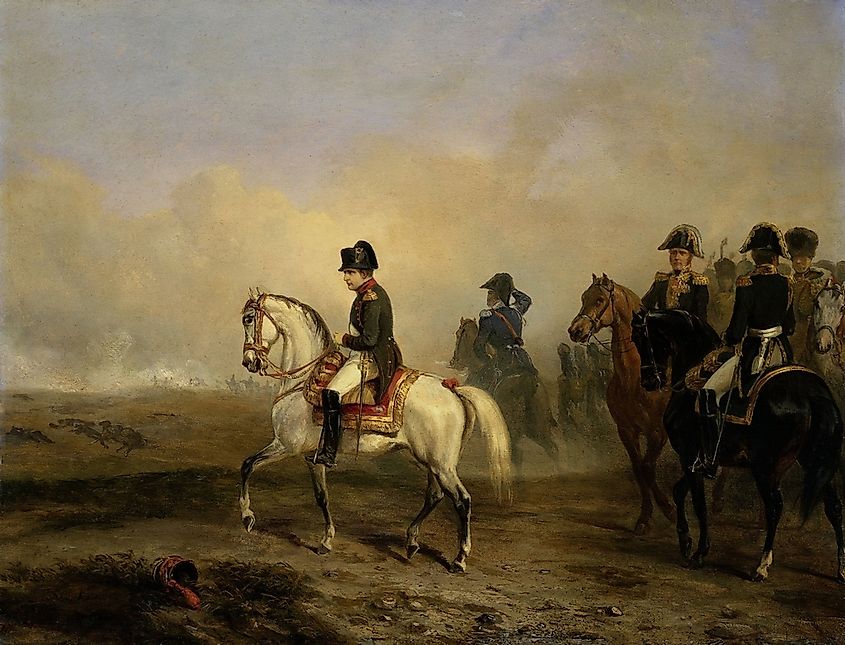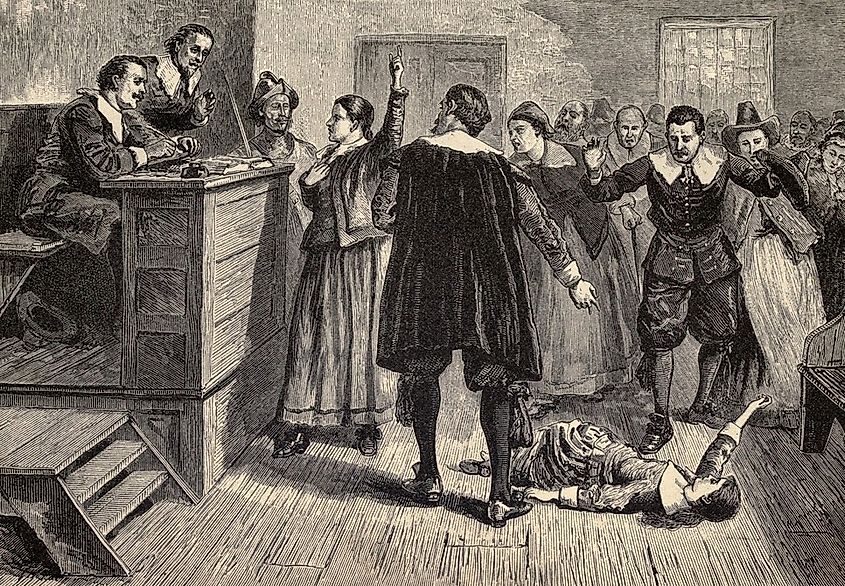- Viking explorer Leif Erikson landed in the Americas almost 400 years before Columbus.
- The iconic Queen of the Nile, had very little, if any, Egyptian blood.
- No witch was burned at the stake during the Salem Witch Trials.
- Benjamin Franklin did not discover electricity.
Christopher Columbus did not Discover America
Explorer Christopher Columbus is believed by many to have discovered America when in truth Indigenous people had already been living in the Americas for thousands of years.
It was the Viking explorer Leif Erikson who first landed in the Americas, almost 400 years before Columbus. And while Columbus’ voyages took him to Central and South America, he never quite made it to the present-day United States.
Marie Antoinette did not say “Let Them Eat Cake.”

The last French queen is credited to have uttered the famous words “Let them eat cake” in response to being told her peasant subjects were starving. However, there is no actual evidence she said this.
Philosopher Jean-Jacques Rousseau used the phrase in his book Confessions, which was written around 1767. Marie Antoinette was only a child at the time.
Others have speculated that French revolutionaries falsely credited the quote to the royal as propaganda against the excess of the monarchy.
Napoleon Bonaparte was not Short

Napoleon is known as one of the world’s iconic military leaders; often depicted as a short man in a waistcoat leading his army.
In fact, Bonaparte was likely of average height, and the belief that he was short could be due to the discrepancies between the French and British measurement system. While the French inch was 2.7 centimeters, the Imperial inch was 2.54 centimeters. Converted to modern metrics Napoleon’s height of 5 feet 2 inches is the equivalent of 5 feet 6.5 inches.
Cleopatra Was Not Egyptian

Cleopatra is famously known as the Queen of the Nile, but she had very little, if any, Egyptian blood. Born in Egypt, Cleopatra’s family origins trace back to Macedonian Greece and Ptolemy I Soter, a general under Alexander the Great.
Although not Egyptian by blood, she embraced many of their customs and traditions and was the first member of the Ptolemaic line to learn the Egyptian language.
People in The Middle Ages did not think the Earth was Flat

A common misconception regarding “the dark ages” is that it was an era of savagery and ignorance when people believed the world was flat.
The idea that the Earth was round had been around since at least the 6th-century B.C, and by the Middle Ages, most scholars and educated people understood that the world was spherical.
Historians believe this mix-up originated from 19th-century writers who criticized the medieval church by claiming that medieval people believed the Earth was flat.
Salem Witches were not Burned at the Stake

In 1692, a doctor in Salem Village, Massachusetts, believed a mysterious illness affecting young girls was the work of black magic. Allegations of witchcraft spread throughout the settlement.
While the belief those found guilty of witchcraft during the Salem Witch Trials were burned at the stake is widespread; none of them faced that fate.
The burning of Salem witches may have been confused with the European witch hunts that occurred between the 15th and 18th centuries. Following the Holy Roman Empire’s “Constitutio Criminalis Carolina” law, the punishment for witchcraft was death by burning.
Benjamin Franklin did not Discover Electricity while Flying a Kite

Benjamin Franklin was a Founding Father, an inventor, and a scientist. But Franklin is wrongly credited with discovering electricity through his famous kite-and-key experiment.
The concept of electric charges has been around for thousands of years. Some scientists doubt if Franklin even performed the experiment, believing that had lightning struck his kite, he would have died on the spot. Instead, experts believe the kite picked up ambient electric charges from the storm, creating a spark when Franklin moved his finger near the key.
Vikings did not wear Horned Helmets

Horned helmets have become synonymous with Vikings, but historians have yet to discover one. The only Viking-era helmet in existence was found in 1943 and has a rounded iron cap and no horns.
Viking warriors between the 8th and 11th centuries were often depicted either bareheaded or in simple helmets made of iron or leather. It is believed that costume designer Carl Emil Doepler’s designs for the 19th-century opera “Der Ring des Nibelungen” are responsible for the persistent stereotypical image of the Vikings.
Sir Isaac Newton did not Discover Gravity when an Apple fell on his Head

You might be familiar with the story of a young Isaac Newton, sitting under an apple tree when he is hit on the head by a falling apple, which inspires him to come up with his law of gravity.
While there is no evidence supporting that legend, apples did play a role in Isaac’s discovery. Newton’s colleague, William Stukeley, published a biography in which he recounts a time when the two men sat under an apple tree and Newton pointed to a nearby branch and wondered why apples always fell straight down, instead of sideways or upwards.
Thomas Edison did not Invent the First Lightbulb

Thomas Edison is one of America’s greatest inventors. He held more than a1,000 patents and is credited with key inventions of the 19th century. But there is much debate as to whether Edison was the first person to invent the light bulb or not.
In the early 1800s, English chemist Humphry Davy produced the world’s first electric lamp. Subsequent inventors improved on Davy’s design, but none were able to make the lightbulb long-lasting and inexpensive.
While he may not be the first to invent it, Edison did create a lightbulb that was practical, long-lasting, and affordable.


 Users Today : 369
Users Today : 369 Total views : 468126
Total views : 468126